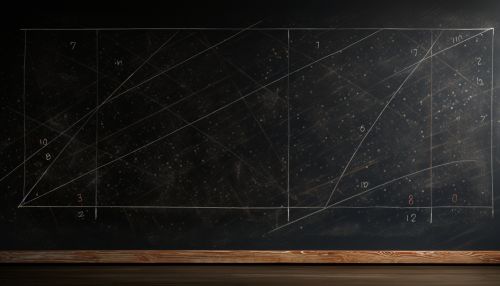Linear Systems
Introduction
A linear system is a mathematical model that describes the relationship between two variables in a way that is linear. This means that the output of the system is directly proportional to the input. Linear systems are commonly used in fields such as engineering, physics, economics, and computer science, where they can be used to model and solve complex problems.


Definition
In mathematics, a linear system is a collection of one or more linear equations involving the same variables. For example, the system of equations:
y = 2x + 3
y = 3x + 2
is a linear system. The solutions to a linear system are the values of the variables that satisfy all the equations in the system simultaneously.
Types of Linear Systems
There are three types of linear systems: consistent and independent, consistent and dependent, and inconsistent.
Consistent and Independent
A linear system is said to be consistent and independent if it has exactly one solution. This means that there is one and only one set of values for the variables that will satisfy all of the equations in the system.
Consistent and Dependent
A linear system is consistent and dependent if it has an infinite number of solutions. This typically occurs when the equations in the system are multiples of each other, leading to overlapping lines or planes when graphed.
Inconsistent
A linear system is inconsistent if it has no solutions. This occurs when the equations in the system are parallel and do not intersect, meaning there are no values that satisfy all of the equations simultaneously.
Solving Linear Systems
There are several methods for solving linear systems, including graphing, substitution, elimination, and matrix methods.
Graphing
The graphing method involves graphing each equation in the system on the same set of axes. The solution to the system is then the point(s) at which the graphs intersect.
Substitution
The substitution method involves solving one of the equations for one variable in terms of the others, and then substituting this expression into the other equations. This reduces the system to a single equation in one variable, which can be solved using standard algebraic techniques.
Elimination
The elimination method, also known as the addition/subtraction method, involves adding or subtracting the equations in the system in such a way as to eliminate one of the variables. This reduces the system to a single equation in one variable, which can be solved as in the substitution method.
Matrix Methods
Matrix methods involve representing the linear system as a matrix and then using various operations to simplify the matrix and solve for the variables. This is a particularly useful method for large systems, as it can be easily automated on a computer.
Applications of Linear Systems
Linear systems have a wide range of applications in various fields. In engineering, they are used to model and analyze electrical circuits, mechanical systems, and control systems. In physics, they are used to model physical phenomena such as the propagation of light and sound, the motion of particles, and the behavior of gases. In economics, they are used to model and analyze economic systems, including supply and demand, market equilibrium, and economic growth.
